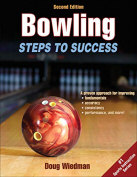The History and Origins of Bowling
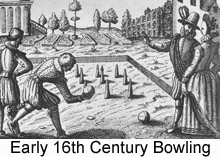
Bowling is one of the oldest and most popular games in the world. Bowling is a sport that can be dated back to circa 3200 BC. In the 1930's, a British anthropologist named Sir Flinders Petrie discovered a collection of objects in a child's grave in Egypt that appeared to be used for a primitive form of bowling. There was a crude version of the bowling ball and pins that were all sized for a child and were very primitive. This find was discovered along with a couple of artifacts that could actually be dated back to 3200BC. This makes the orgin of bowling more than 5000 years old!
The next historical bowling related find was in Germany by a historian named William Pehle whom said that there was evidence of bowling in Germany around 300AD. England took the reins about 1366 as bowling was forbidden by King Edward III. The game was taking archery practice away from his troops. It is also known that Henry VIII brought bowling back. Several types of “pin games” started to exist where balls were hurled towards objects for points. These objects were somewhat pin shaped but crude renditions of modern day bowling pin design and shape. As you can see, the history of bowling is rich and deep.
There are several different games that resemble modern bowling, there are ninepin variations in Europe and Petanque is popular in France. Bocce ball originates in Italy and is similar to British lawn bowling. Dutch and English immigrants each brought their version of bowling with them from their country’s to the United States also. In America, the very first mention of the word “bowling” is found in the book Rip Van Winkle, a famous story by Washington Irving, who gets woken up by the sound of "crashing ninepins" that was published during 1812.
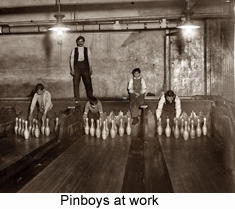
Bowling history continues on in the United States. A lawn bowling site was made in the heart of New York’s battery area that was the very first permanent location to bowl and is now still called Bowling Green and is in what is now the financial district. Bowling became very popular over the years in America and had become one of the biggest betting games. Connecticut banned any ninepin games at all in 1841. Because of mass popularity bowling was brought back.
In the 1800’s the tenpin game was popular because of nine pin being outlawed as a gambling game. Adding an extra pin gave people a way to keep bowling and exploited a loophole in the law. Ball and pin formations still varied by region and it wasn’t until various regional bowler’s clubs came together with the owner of a restaurant on Sept. 9 1895 and formed the American Bowling Congress at Beethoven hall in New York City. Consistency was born from there as was national competitions. The congress was only for men, however women had been bowling since the late nineteenth century. The women of bowling formed their own congress called the Women’s National Bowling Association in 1917. Bowling really exploded from here due to the organized, agreed upon standards. The game grew in popularity.and became very popular all over America.

The equipment used for bowling also had a great advance in technology as far as the first rubber ball, made in 1905 called the "Evertrue" was introduced. The Brunswick Corporation in 1914 developed a ball using what was called “mineralite”. The balls before this new “mysterious rubber compound” had been made mostly of hard wood. With the ball standardized, in 1951 the America Machine and Foundry Company purchased patents to eliminate the “pinboy”, a person responsible for setting up the pins, by adding an automatic “pinspotter” in 1952. After these innovations in the sport, media embraced bowling by the 50’s and NBC had “Championship Bowling”, the first airing of network coverage of bowling. Bowling for Dollars and several others followed. The sport of bowling grew and grew because of all the media attention.
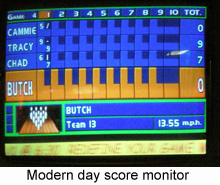
The sport of bowling has grown leaps and bounds from its humble carved beginnings and is still growing today. Bowling history continues to be written. New technologies have improved the bowling ball, electronic scoring, monitors that show the path and speed of your ball, and many other aspects of the game. Several different types of games and strategies have been born and so has the standard of the sport. Many people bowl on leagues and for fun, families gather for birthday parties and fun which is what the sport was based on. Bowling alleys are actually growing in numbers across the country due to popularity.
The fifties were the decade of the bowler but we have a new spin on the old days with things like “lunar bowling” with all black lights and “prize bowling”. The truth is, bowling is still growing today and we are forming the way people will bowl in the future. Sports like bowling are hard to keep up with because it is constantly changing. People think of new and unusual ways of bowling and scoring every day. Ninety five million people across ninety 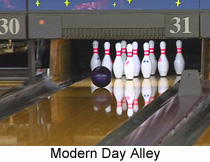 countries still bowl every day. In the Federation Nationale des Quilleurs, bowling’s best athletes regularly compete in Olympic Games and worldwide competitions and championships.
countries still bowl every day. In the Federation Nationale des Quilleurs, bowling’s best athletes regularly compete in Olympic Games and worldwide competitions and championships.
Bowling today remains one of the best activities for bonding with friends. It’s always a good time getting together with friends and family for a little friendly bowling competition. If you are looking to improve your bowling skills, or just pick up a few tips to make you a better bowler, we recommend checking out The Ultimate Bowling Guide. There is simply no better guide that you can find that will help you with your bowling game. We have used this guide and increased our averages significantly! As always, have fun bowling out there.
A bowling pin will fall down at a tilt of 7.5 degrees.
